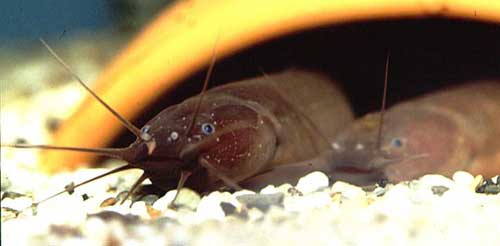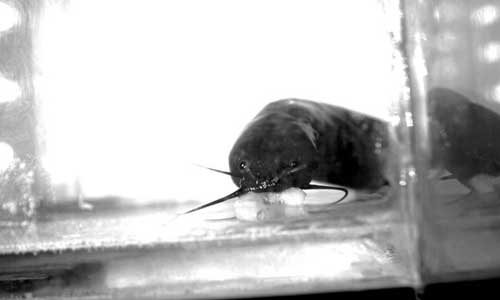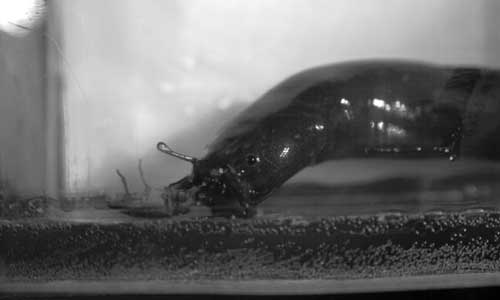Scientists have discovered a species of catfish that can hunt and catch prey on land. The eel catfish Channallabes apus has been found in the muddy swamps of tropical West Africa.
 |
The catfish Channallabes apus. (Photo: LiveScience) |
Researchers from Belgium hope this discovery will help explain how fish transitioned from marine to terrestrial environments millions of years ago.
With a small head and a long, flexible body measuring 30-40 cm, Channallabes apus resembles an eel. Its diet has provided scientists with the first evidence of this remarkable behavior—it primarily feeds on beetles found on land.
They catch prey by pushing their bodies onto land, lifting the front part of their bodies, and lowering their heads to pounce on insects.
 |
 |
 |
Footage of the catfish Channallabes apus hunting. (Photo: LiveScience) |
Typically, fish use suction to feed underwater, but since air is much less dense than water, Channallabes apus requires a new strategy to capture its prey.
“The way it positions its head prevents the prey from being pushed away,” explained Sam Van Wassenbergh, an author and biologist from the University of Antwerp, Belgium. “This way, it can place its jaws over the prey, and once it has a firm grip on the meal, it returns to the water’s surface to digest the insect.”
Channallabes apus uses the rest of its body to maintain balance when out of the water.
The researchers noted that C. apus shares many characteristics with fossils of transitional creatures that moved from water to land found in the Devonian period (about 400 million years ago), including the recently described fossil Tiktaalik rosea.
This organism, found in the northernmost regions of Canada, may represent a “missing link” between marine and terrestrial animals.
T. An



















































